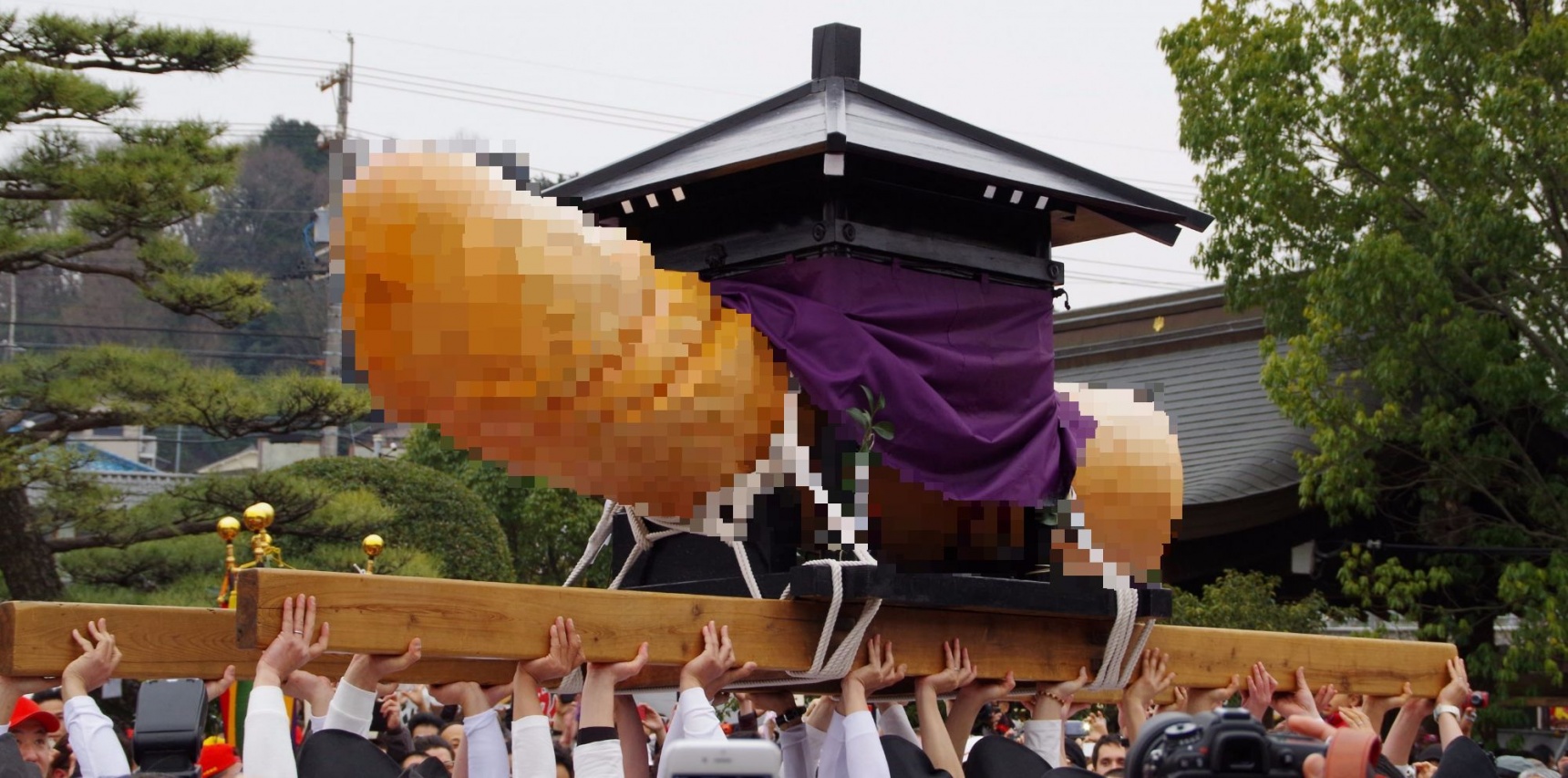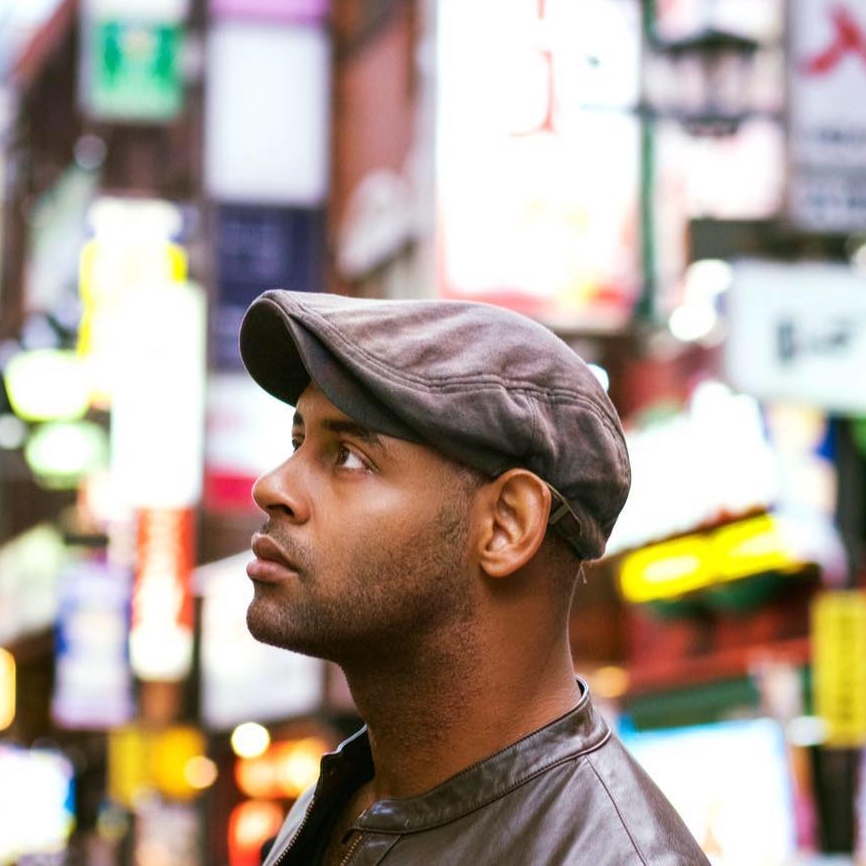Japan's Fertility Festivals: The Hard Facts
Around the world, people of different backgrounds celebrate the new harvest or New Year with fertility festivals. While many are family friendly and uplifting, Japan has a few that are a little more on the adult side. We present to you a few of those mature matsuri (festivals) and, to be on the safe side, a potentially NSFW warning.
By Wendell T. HarrisonKanamara Matsuri
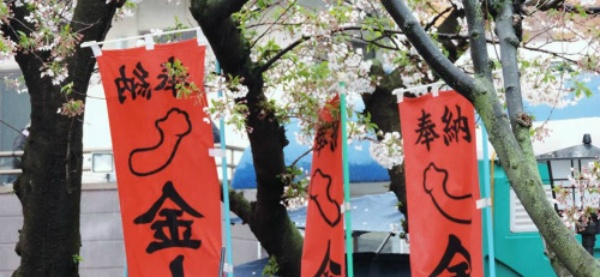
http://studbroad.tumblr.com/post/115577441295/kanamara-matsuri-phallus-festival-kanayama
The Kanamara Matsuri (Steel Phallus Festival ) is a Shinto event that officially started in 1969 in the city of Kawasaki, just outside of Tokyo. Held annually on the first Sunday in April, this festival may seem silly on the surface but has a longstanding history. According to one legend, a demon in the Edo Period (1603-1868) had unrequited feelings for a beautiful woman. However, when she married another man, the demon, out of spite, waited in the woman’s vagina for the wedding night. The moment the new groom tried to consummate the marriage, the sharp-toothed demon bit off the poor man's member.
Eventually the woman remarried, but the jealous demon once again mangled the new bridegroom's manhood. So the ingenious villagers came up with a plan to trick the demon by using a steel phallus. The next time the demon tried his fiendish trick, he was left toothless. He immediately left the woman in peace, giving birth to a legend and, over time, a festival.

https://retrip.jp/articles/23619/
The deities enshrined in Kanayama Shrine, the site of the festival, are believed to promote sexual health and fertility, as well as ward off STDs and infections. The city of Kawasaki was a major stop on the old Tokaido Road between Tokyo and Kyoto, with a corresponding number of "tea houses," and the shrine has long been popular among prostitutes who would pray for protection from venereal diseases.
There are three mikoshi (portable shrines) that are paraded around for the festival. The Kanamara Fune Mikoshi, pictured above, is basically a steel penis palanquin, and a reflection of the legend. Fune, which means ship, describes the base of the mikoshi.
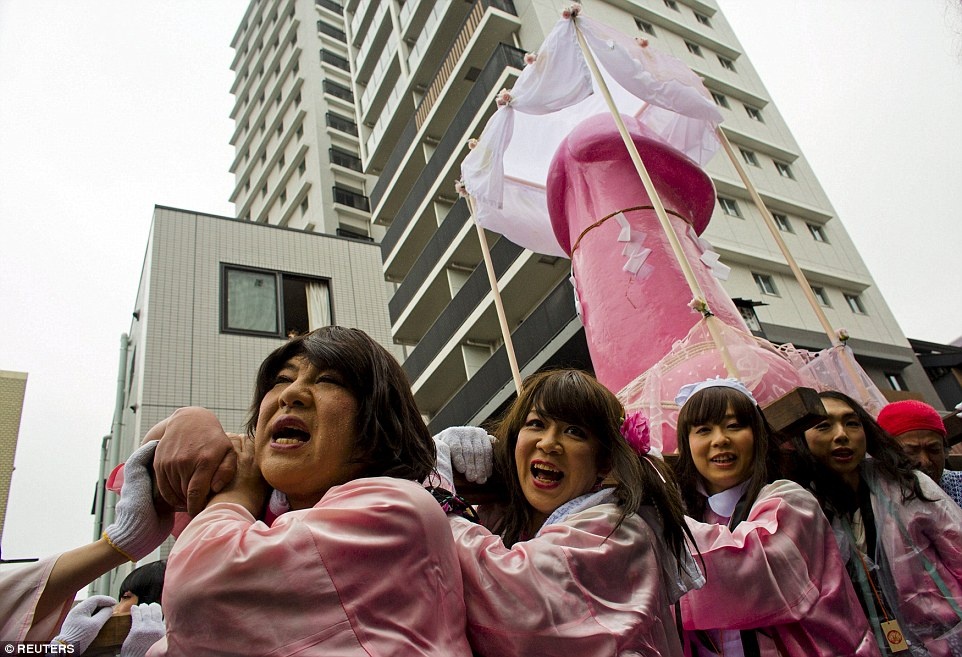
http://www.dailymail.co.uk/travel/travel_news/article-3028751/Revellers-carry-giant-phalluses-streets-Kawasaki-City-Japan-Kanamara-Matsuri-festival.html
The second mikoshi is called Elizabeth, named after the Elizabeth Kaikan, a self-described "cross dresser's paradise" and salon in Asakusa, Tokyo. It was donated by the club and each year is carried by members in women's garb. The aim is to promote awareness to sexual minorities as well as sexually transmitted diseases. Proceeds from the festival go toward HIV and AIDS research.
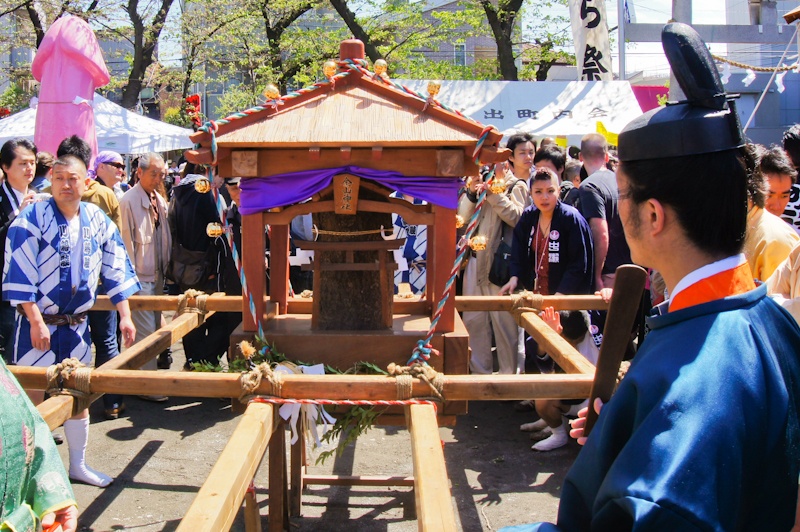
http://notesofnomads.com/wp-content/uploads/Phallus-Festival-03579.jpg
The Kanamara Daimikoshi is the oldest of the three and is basically an old log. However, it tends to be overshadowed by the towering pink phallus that precedes it.

http://www.timetravelturtle.com/2013/04/kawasaki-penis-festival-kanamara-matsuri-japan/
Aside from the edible goodies, there are also several other fun souvenirs you can pick up. Most popular are the candies and wooden carvings, but you can get a vegetable or fruit phallus as well—or a unique nose.

http://www.huffingtonpost.com/2014/04/07/japan-penis-festival-kanamara-matsuri_n_5106378.html
These candles are considered the only acceptable form of burning that comes from the festival.
https://www.youtube.com/watch?v=5HMwASzcdIU
For a more comprehensive look at the festival, from its origins to its significance, check out this informative video from Only in Japan.


